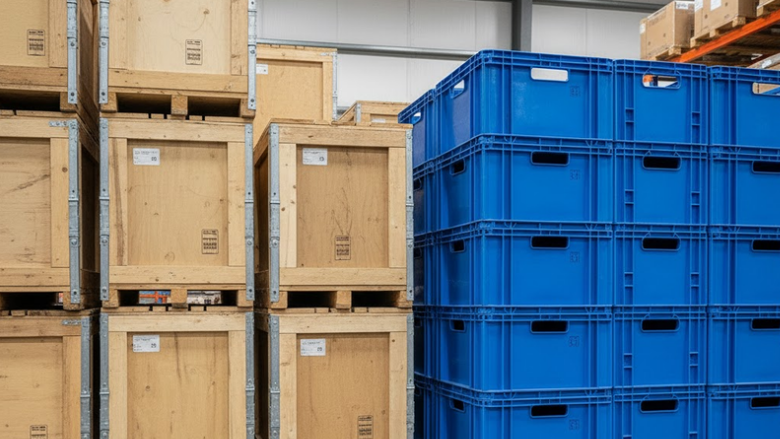Wooden Pallets vs. Plastic Pallets: Which Is Better for Shipping

Shipping efficiency depends on pallets that safeguard goods, streamline handling, and manage costs effectively. Both plastic pallets and wood pallets for shipping serve critical roles in logistics, but they differ in durability, cost, and environmental impact. Wooden pallets are often favored for their affordability, repairability, and recyclability, while plastic pallets provide consistent sizing and moisture resistance. Choosing the right pallet type also affects warehouse workflow, freight optimization, and overall supply chain reliability.
Strength and Durability
Wooden pallets are recognized for their high load-bearing capacity and robust construction, making them ideal for heavy or oversized shipments. They can be repaired when damaged, which extends their service life and reduces replacement costs. Plastic pallets are lighter and naturally resistant to moisture and pests, but they may crack or deform when subjected to extreme weight or impact and are more expensive to replace. For industries handling large or heavy products, wood generally offers stronger and more economical support over repeated shipping cycles.
See also: Cleaner Ponds: Tips and Techniques for a Healthy, Clear Water Garden
Shipping Efficiency and Safety
Pallets play a critical role in maintaining product stability during transport and warehouse handling. The importance of pallets and palletizing for safe and efficient shipping demonstrates how the right pallet choice prevents load shifting, reduces breakage, and improves loading and unloading speed. Wooden pallets naturally provide better surface friction, helping stacked items remain secure during long-distance transit. Plastic pallets often need added non-slip coatings or wraps to achieve comparable stability, which can add to preparation time and handling costs.
Environmental and Cost Considerations
Sustainability and cost control are key factors in pallet selection. Wooden pallets are made from renewable resources and can be repaired, recycled, or repurposed, reducing environmental impact and lowering material expenses. They are also less expensive to produce and purchase, making them attractive for cost-conscious operations. Plastic pallets can be reused many times and perform well in clean, dry environments, potentially offering a longer service life. However, their higher upfront cost and the need for specialized recycling processes can reduce their overall cost-effectiveness, especially when rapid turnover or simple disposal is a priority.
Industry and Compliance Factors
Some industries, such as food distribution and pharmaceuticals, require pallets that resist moisture and allow easy cleaning to meet strict hygiene standards. Plastic pallets meet these demands and are often preferred when sanitation is critical. Wooden pallets, when heat-treated, meet international shipping standards and remain a reliable option for global trade. Their widespread availability ensures a consistent supply and simplifies compliance with transport regulations, even during high-demand periods.
Enhancing Overall Efficiency
The type of pallet selected affects more than shipping. Wooden pallets integrate easily with forklifts and automated handling systems and can be repaired on-site, helping maintain smooth warehouse operations and reducing downtime. Their recyclability and repairability contribute to lower long-term costs and support sustainable business practices. Plastic pallets, while lighter and useful in specialized settings such as air freight or clean rooms, typically involve higher initial investment, which can limit their practicality for general-purpose shipping.
Conclusion
Both wooden and plastic pallets play essential roles in modern logistics. Wooden pallets stand out for their strength, affordability, and recyclability, making them a practical choice for heavy loads and cost-sensitive shipping operations. Plastic pallets remain valuable when moisture resistance and sanitation are top priorities. By carefully considering durability, cost efficiency, and environmental impact, businesses can select the pallet type that best supports their shipping requirements and long-term operational goals.





